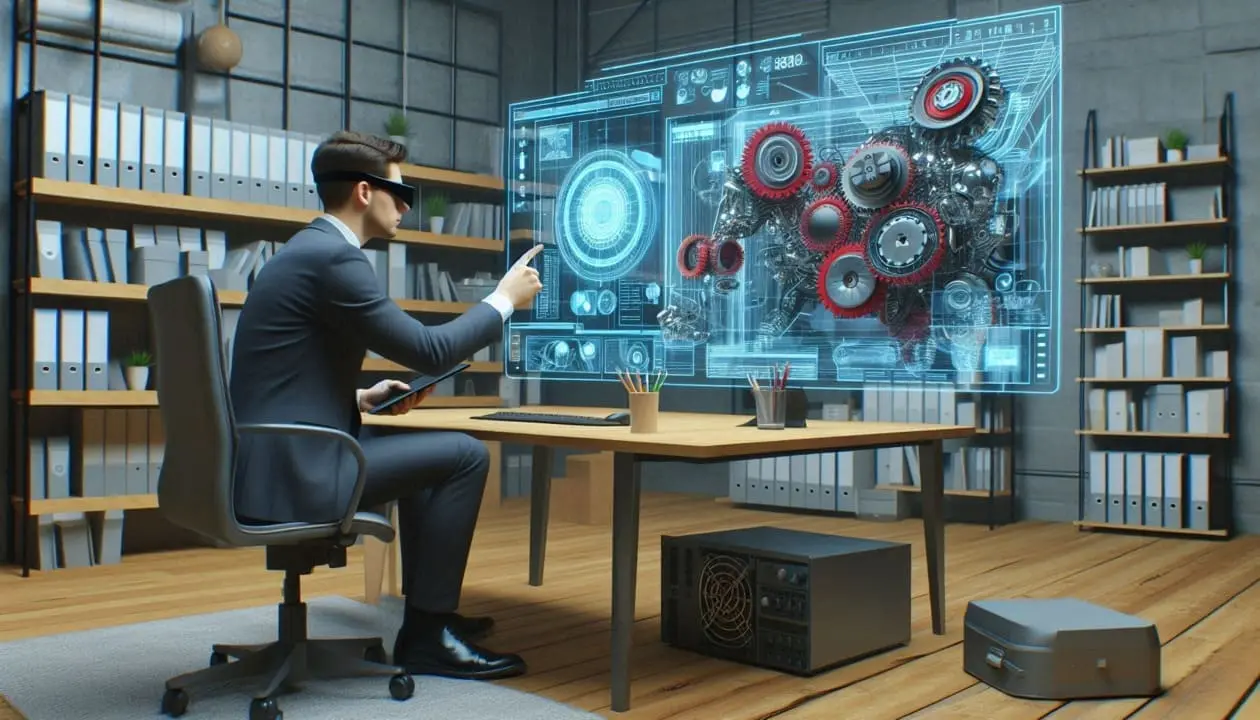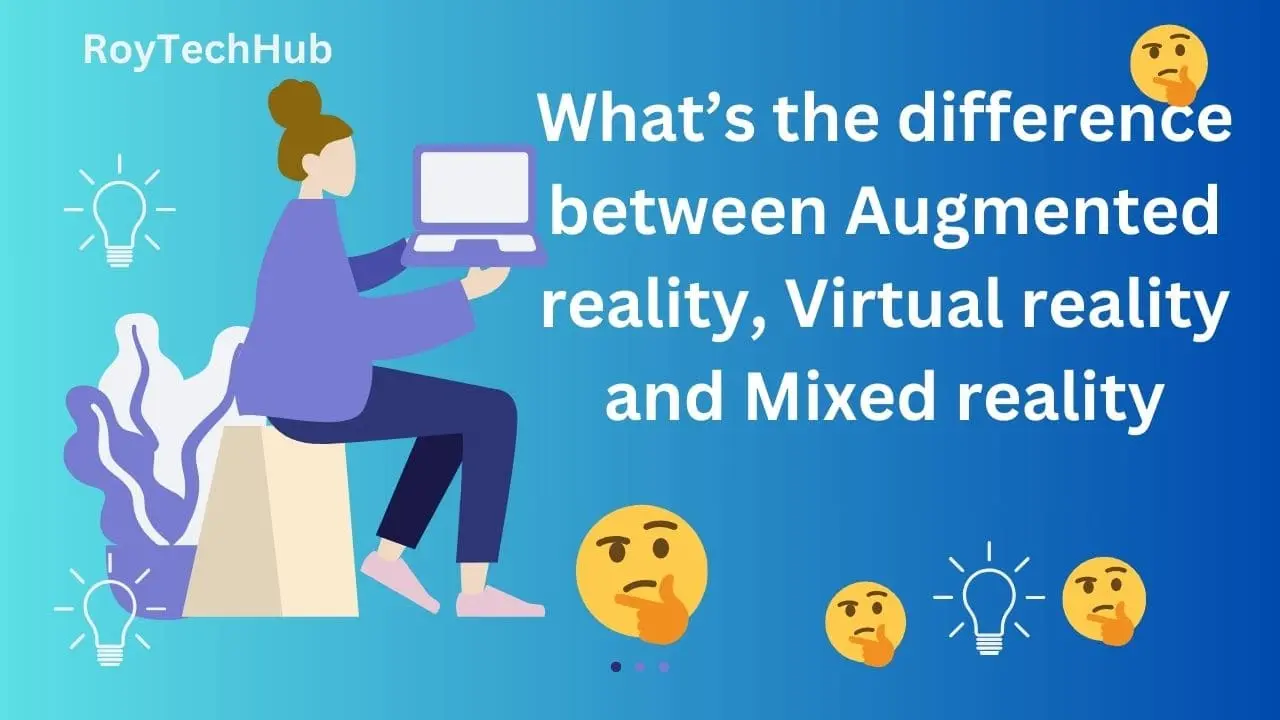AR, VR, and MR are considered part of immersive technologies because they try to provide the consumers with more appealing and realistic experiences.
Table of Contents
ToggleDepending on the chosen technology, it has its own features with regard to immersion and interaction.
It becomes important for the businesses, developers and consumers to understand these differences in order to utilize these technologies for various purposes.
Augmented Reality (AR)
Augmented reality or simply AR is means of enhancing a view of reality for example through the use of a smartphone, tablets or even AR glasses in order to overlay digital information like photos, graphics, videos and even 3D models on to the real time environment.
Going with digital content AR enhances reality which can be contrasted with VR that creates a realistic world.

Key Features
- Real-Time Interaction: AR enables the users to interact with the content displayed physically and virtually at the same time and Interacting with the physical and digital world simultaneously, which is the strength of AR.
- Contextual Information: AR can give relatd info according to the environment of the user and thus improve the consumers’ knowledge and experience.
- Accessibility: Yet again, more people can access AR through other familiar devices including the smartphone and tablets as compared to accessing VR.
Applications and Examples
- Gaming: Famous applications for augmented reality such as Pokémon GO enable players to perceive the given characters of the game in the real physical environment.
- Retail: AR apps allow customers to see how certain products would look like in their homes for instance putting on virtual clothes, or placing virtual furniture in a room.
- Education: A particular school subject, in the case, AR can help in making education more interesting by adding layers of interactivity to the textbooks or the materials that are used in class.
- Navigation: Google map or similar apps can show them real time directions along with information on the different places of interest which can enhance travel.
Virtual Reality (VR)
Virtual Reality (VR) is one that completely engulfs an individual in a virtual world that is real but different from the real world. Whereas VR is done with the help of a headset like Oculus Rift or HTC Vive that covers user’s sight and offers a completely different environment through vision and hearing.

Key Features
- Full Immersion: While other methodologies only allow the immersion of some aspects of reality, VR creates a new reality that includes only the objects and people involved in a particular process.
- Interactive Environments: The user’s avatars can manipulate virtual objects and the surrounding environment and this is usually done with the help of special controllers that are handheld or motions sensors.
- Isolation from Reality: Diving into virtual reality, people are completely disconnected from the physical environment and thus have the feeling they belong to the VR setting.
Applications and Examples
- Gaming: While video games provide less immersion into the game environment and cannot be compared to VR in terms of the immersion level that it guarantees.
- Training and Simulation: People use VR in training different field like; Flight simulation training for pilots, medical simulation for surgeons, and military simulation for soldiers.
- Entertainment: Based on this definition, more specific possibilities for VR are the means of watching movies, virtual concerts and even virtual art installations.
- Virtual Tourism: Consequently, it permits the users to travel or substantially experience real or imaginary spaces and places for a new type of travel or tourism system.
Mixed Reality (MR)
Technological approach allows filtering out the physical and constructing the new ones that facilitate interactions between the virtual and the physical objects in real time. There is a technology class that can be termed as Mixed Reality (MR).
MR is nearly a hybrid of both AR and VR; however, it is a more systematized implementation of the two. The Microsoft HoloLens and Magic Leap One are units of an MR hardware.

Key Features
- Real-World Integration: MR makes it possible to interlink the realworld objects with the virtual ones and have them exist and engage the users in the same environment.
- Enhanced Interaction: It is made possible for user to wit and manipulate physical as well as virtual objects more naturally and fluently.
- Spatial Awareness: MR devices have special features of motion sensors and cameras to get awareness about the surrounding so that digital contents can be placed and controlled in real space.
What’s the difference between Augmented reality, Virtual reality and Mixed reality
Key Differences
- Level of Immersion: VR simulates the environment being used to replicate real life situations in a completely virtual manner while AR places objects over the real existing environment and MR mixes reality with virtuality in real time.
- User Interaction: While the communication with digital objects is conducted in real time in AR; VR allows interacting within the virtual environment; and finally, with both the physical objects and the virtual ones – through MR.
- Accessibility: AR is the easiest and needs only the use of a smartphone or tablet while VR and MR often need VR and AR headsets and sensors.
Overlapping Technologies
AR and MR: MR and AR are similar in that they take digital content and overlay it on the real world, but MR provides enhanced interactivity and integration.
VR and MR: Where as VR provides fully computer generated environment MR in part uses virtual reality by enabling user to engage with virtual objects placed in the real environment.
Future Prospects
Advancements in Hardware: This technology is going the see steady growth and innovation of new devices, with lighter, and more comfortable, cheaper head sets giving more usage to AR,VR, and MR.
Improved User Experiences: New developments in software as well as user interface technology will improve the operability of these technologies.
Broader Applications: With the future advancement in the development of the AR, VR, and MR, more areas of applications will be identified out of the following fields, for instance, the healthcare institutions, educational sector, entertainment industries, and the retail industry.
Conclusion
AR, VR, and MR are changing the possibilities for the perception of digital content and the real environment.
Every technology provides different possibilities, contact with the content, and characteristics.
Thus, with the further development of such technologies, new opportunities and uses will appear in various spheres of human activity and life, changing it for the better.
For this reason, it is crucial to distinguish between between AR, VR, and MR to make precise decisions regarding how to use them.
Regardless of whether you are an enterprise aiming at improving customers’ experiences or interaction, a developer implementing engaging solutions, or a buyer eager to make the relationships between you and the digital content more interesting, these technologies will help extend the opportunities for the future.








This blog post was exactly what I needed. Your clear and concise explanations made the subject much easier to understand. Thank you for taking the time to put this together. I’m looking forward to reading more from you!